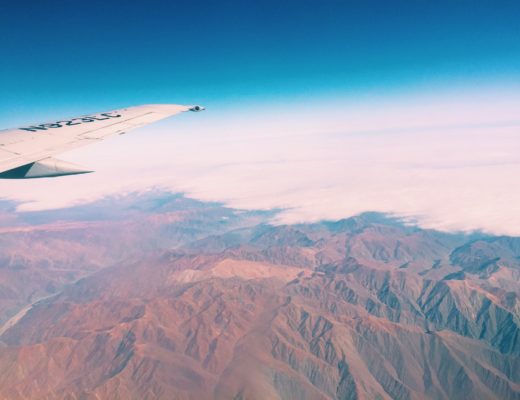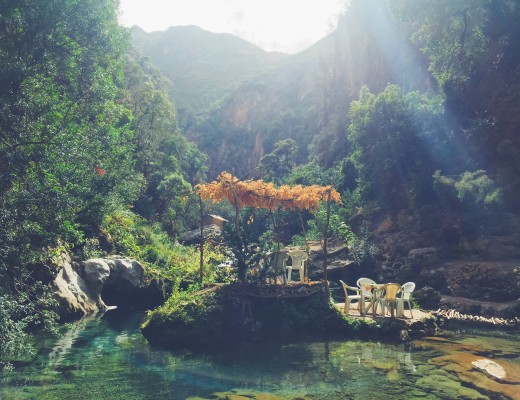I. Have. So. Much. To. Do.
I say this everyday and everyday my pre-trip to-do list looms over my head. People look at me like I’m nuts. “Throw some clothes in a bag and go!” Yes, I suppose I could do that, but there’s a decent amount of prep and tying of loose ends that needs to happen before I take off.
“Pre-Trip To-Do’s” was originally entitled: “All the shit you have to do before you start doing what you want to do.” In this first post I’m going to touch on finances. Here’s what was/is on my finance to-do list:
Get travel-friendly credit card with chip: I did a ton a research on this because I knew I wanted to, first and foremost, avoid foreign transaction fees, which can rack up quickly and put a real dent in my budget. I eventually settled on the CapitalOne Venture Card. It has no foreign transaction fees and when you spend $3,000 in the first three months you get a $400 credit towards travel expenses. Initially I was worried about being able to hit $3k in three months, but it ended up being easy for me since I was in the beginning stages of planning and buying “big ticket” things like plane tickets and health insurance. Points are easy to redeem and you do it as a credit to your account. Admittedly, there are cards out there whose points will take you further (i.e. points used for flights will get you a lot more than the cash value of the points). But I was worried about how easy this would be, restrictions, etc. There’s no annual fee in the first year, but after that it’s $59 (definitely worth the savings). And after hearing horror stories from family and friends traveling in Europe, I knew I definitely wanted a card with an EMV chip. Apparently this more-secure way of using your credit card is so common in Europe now that many businesses won’t accept cards that don’t have it (Ex: my two BFFs and their husbands got stuck on a French tollroad with their non-chipped cards, no cash and resorted in tapping on other drivers’ windows, asking for spare change in very bad French. As you might imagine, the French weren’t having it.)
The other card I considered was the Chase Sapphire Preferred card. It also has no foreign transaction fees, a $500 credit to use towards travel expenses when you spend $4,000 in the first three months, and savvy travelers swear by it as the points to miles ratio is BOSS. But being a novice traveler I was worried about being able to use it wisely. Maybe in the future. Also, in my research I looked a TONS of websites, but the best by far was NerdWallet. It confirmed what I’d found after lots of reading in a short post that clearly listed the pros/cons of each card. I now reference this site for all of my finance-related questions!
Upgrade bank card – I bank with PNC and, because I’m a creature of habit, I didn’t really want to change. In order to accumulate points and avoid foreign transaction fees, I’ll be using my CapitalOne Venture card as much as possible, but when I’m in, say, Laos and credit cards aren’t options I’ll need to use my bank card to withdraw cash from an ATM (assuming I can find one). It took one very frustrating, confusing chat and one very pleasant, succinct chat with two different PNC reps to figure this out, but here’s the gist: Normally, PNC would charge me a $5 flat fee on any withdrawal I make at a foreign, non-PNC ATM. On top of that, the local bank attached to the ATM would also tack on a surcharge fee (probably around $5). Luckily, I was able to upgrade to PNC’s Performance Checking for free, under which they will waive all non-PNC ATM fees and up to $5 a month from other banks’ ATM fees. It’s not huge, but it’s some savings that didn’t cost me anything (as long as you have an average monthly balance of $2,000 in your checking account you’re eligible to upgrade for free).
Establish a budget – This is a stab in the dark, but I’m budgeting roughly $50 a day, for a total of $18,250 if I’m gone for exactly 365 days. This will obviously fluctuate based on where I am, any special activities I’m doing, etc. It doesn’t account for preparing for the trip (insurance, clothing, etc.) or flights. It pretty much covers where I’ll stay, food, local transportation, activities, admission fees, etc. I feel pretty good about my budget, but the real test will be when I’m finally on the road.
While money questions (and this post) was difficult for me to slug through, it feels worth it so that I at least feel prepared in this aspect of my trip.
NOTE: My friends and their husbands eventually made it off the French tollroad and are safely back in America. I didn’t want you to worry.





No Comments